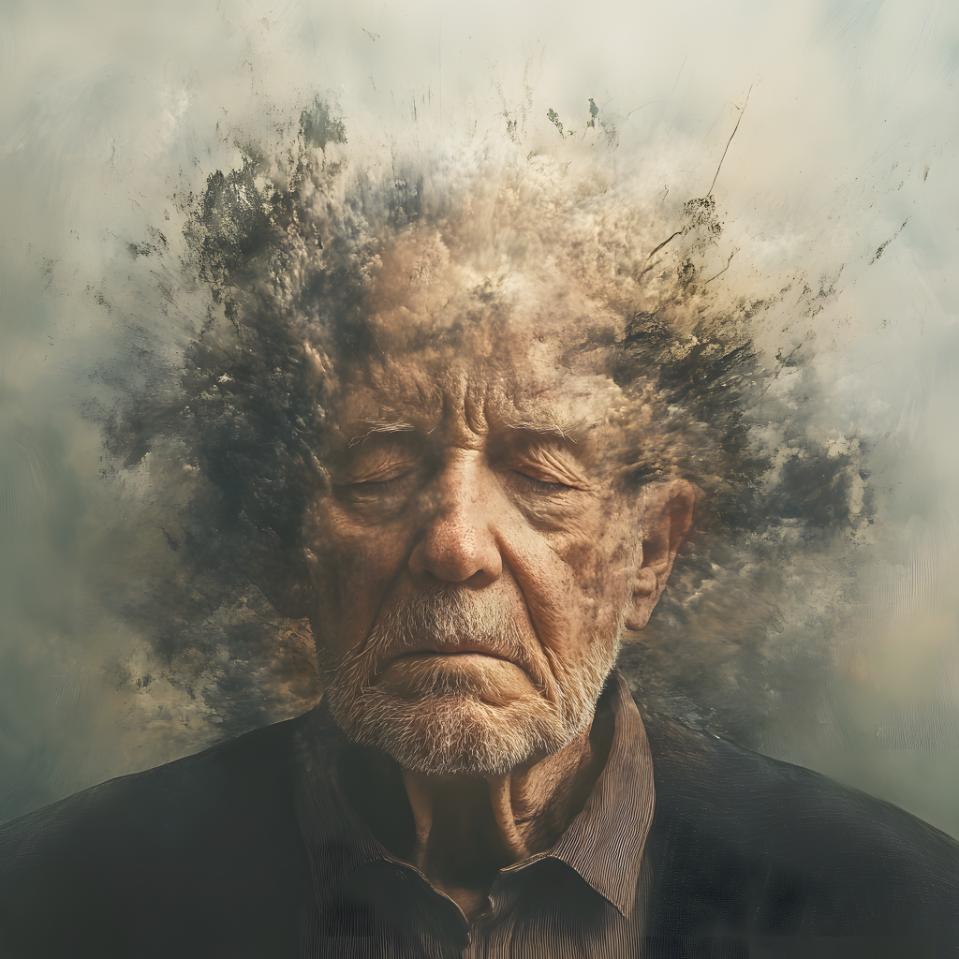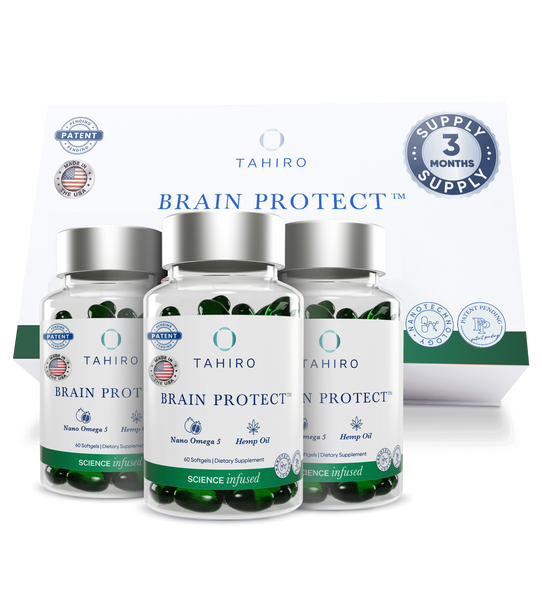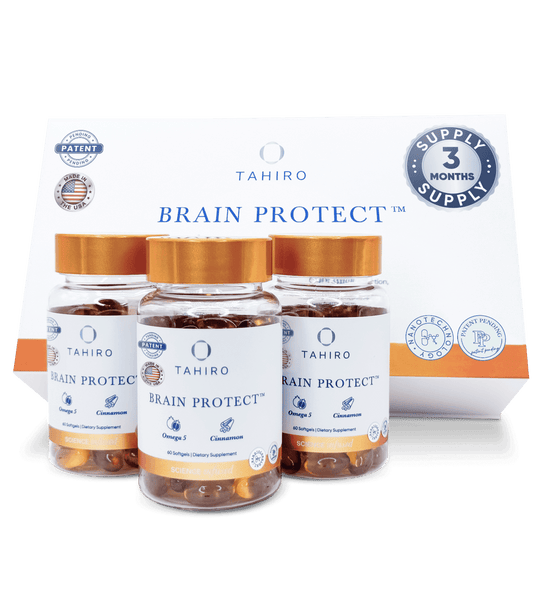What is dementia?
Dementia is an umbrella term for a group of conditions that affect a person’s cognitive abilities. A person with dementia experiences a decline in functions like memory, language, problem-solving, and planning, and this decline is severe enough to interfere with their daily life.
There are also other conditions that can impact cognitive abilities, such as traumatic brain injury and stroke. In these cases, the decline in cognitive abilities is sudden. The loss of function may be permanent, but generally doesn’t continue to get worse once the person has stabilized.
By contrast, in people with dementia, the loss of cognitive abilities is gradual and progressive, meaning that it slowly gets worse over time.
What are the different types of dementia?
There are several different types of dementia, and although there’s a lot of overlap between them, each type has unique characteristics. If you’re currently experiencing dementia in your family, understanding the particular type of dementia that your loved one has can help you to better support them and to be better prepared for what the future may hold for them.
These are the most common forms of dementia, and how each one is unique.
Alzheimer’s disease
This is the most common form of dementia, and accounts for the majority of dementia cases. Many people use the terms “dementia” and “Alzheimer’s disease” interchangeably, but Alzheimer’s disease is actually only one of many forms of dementia.
Most patients with Alzheimer’s disease are in their 60s or older, although this condition sometimes occurs in younger people as well.
The first signs of Alzheimer’s disease usually involve problems with memory, such as forgetting recent conversations, getting lost in familiar places, or frequently misplacing objects. Although people with Alzheimer’s disease have good days and bad days, there’s a slow decline in their cognitive abilities over time. As the disease progresses, more severe difficulties with memory, language, and spatial awareness develop.
Researchers still aren’t sure exactly what causes Alzheimer’s disease. Inside the brains of people with Alzheimer’s disease, there are collections of a protein fragment called beta-amyloid. In addition, the brain cells are filled with filaments formed from abnormal proteins, which are called neurofibrillary tangles. It’s currently not certain whether these abnormal proteins and protein fragments are the cause of Alzheimer’s disease, or a side effect of the process that causes the disease.
Even though we still don’t fully understand the cause of Alzheimer’s disease, we do know of several risk factors that increase a person’s likelihood of developing this condition. These include genetics, lifestyle factors (such as a lack of exercise), and environmental factors (such as exposure to toxins). The risk of Alzheimer’s disease also rises sharply with age, with this condition affecting approximately 33% of people over the age of 85.
Cerebrovascular dementia
Cerebrovascular dementia, often known simply as vascular dementia, is caused by damage to tiny blood vessels throughout the brain. This reduces blood flow, preventing brain cells from getting the oxygen and nutrients they need to function well and to maintain themselves. Over time, the cells become damaged, and they start to die off.
As with Alzheimer’s disease, the risk of vascular dementia also rises as people get older. It’s rare in people under the age of 65, and becomes much more common over the age of 80.
While the symptoms of vascular dementia can overlap with those of Alzheimer’s disease, there are generally some differences. Rather than memory issues, the first symptoms of vascular dementia are usually related to thinking and problem-solving. For example, patients may experience slowed thinking, confusion, difficulty following instructions or performing tasks, and difficulty speaking. Memory issues tend to start a bit later in the course of the disease.
While vascular dementia does get worse over time, the progression may be uneven. Many patients experience sudden declines in their cognitive function, followed by plateau periods where nothing really changes for a while. These sudden changes result from a significant blockage of blood flow to a region of the brain, which kills off brain cells.
The risk factors for cerebrovascular dementia are the same as those for other conditions that affect the blood vessels, such as heart disease and strokes. People with high blood pressure, high cholesterol, diabetes, low levels of physical activity, or who smoke are significantly more likely to develop vascular dementia.
Lewy body dementia
This is another type of dementia that became more widely known because of a famous patient. Robin Williams, the well-known comedian and actor, had Lewy body dementia. He died in 2014, and his disease was unfortunately not diagnosed until after his autopsy.
Compared with Alzheimer’s disease and vascular dementia, Lewy body dementia (LBD) has a slightly younger average age of onset. Still, most patients with LBD are age 50 or older.
The most common early symptoms of LBD involve things like attention and mood. Patients have trouble paying attention and organizing their thoughts, and their behavior may be erratic. Many patients become apathetic, depressed, or anxious, and they may have severe sleep disturbances. Besides the cognitive symptoms, people with LBD often experience hallucinations, meaning that they see or hear things that aren’t really there. Delusions, which are abnormal thought patterns that are not connected to reality, are also common.
In people with LBD, brain cells are filled with small clumps of a protein called alpha-synuclein, which are known as Lewy bodies. These clumps interfere with brain function and damage brain cells. Parkinson’s disease (a condition that causes tremors and stiff and slow movements) is also caused by Lewy bodies accumulating in certain brain cells that are related to movement.
The symptoms of these two conditions overlap quite a bit, but the time course is different. In people with LBD, dementia symptoms are apparent early, and movement problems either occur along with the dementia or come later. Those with Parkinson’s disease notice movement issues first, but may develop dementia as their condition progresses, which is known as Parkinson’s disease dementia. More than 70% of patients with Parkinson’s disease will develop dementia within a decade of their initial diagnosis.
Frontotemporal dementia (FTD)
Also known as frontotemporal dementia, this is the type of dementia that Bruce Willis is currently experiencing.
Unlike other types of dementia, FTD often affects middle-aged people. It’s most commonly diagnosed between the ages of 45 and 64. This younger onset is particularly heartbreaking for families.
While FTD does cause problems with memory, this isn’t typically the first sign of the condition. Instead, FTD generally starts with changes in behavior, such as acting inappropriately or illogically. Patients may also have trouble with abstract thinking and planning. They often experience difficulty using language, such as having trouble expressing ideas or frequently hesitating while speaking. Early in the course of FTD, memory is not affected, although it often declines later in the course of the disease.
It’s still not clear what causes FTD. The disease involves degeneration in particular regions of the brain, known as the frontal and temporal lobes. Abnormal proteins may build up in brain cells in these regions, although the specific proteins are different in different patients.
Mixed dementia
Although there are several different types of dementia, it’s not impossible for a person to have more than one of these at the same time. This is known as “mixed dementia.”
For example, many people have both vascular dementia and Alzheimer’s disease at the same time. They may show characteristics of both types, such as a slow and gradual progression over time but with intermittent sharp declines.
How is a specific type of dementia diagnosed?
When a person is showing signs of dementia, there’s no simple test to determine which type it is. Doctors rely on a variety of different methods to determine what type of dementia a person is most likely experiencing. Some of these methods may include:
- Medical history. The specific symptoms that a person is experiencing, and the timeline of when they appeared, can strongly suggest a particular type of dementia. In some cases, the presence of other medical conditions, such as high blood pressure, may also point towards a specific diagnosis.
- Family history. Some types of dementia have a strong genetic link. If a patient has multiple relatives who have all experienced a certain type of dementia, this will be considered as part of the diagnostic process.
- Cognitive testing. This involves using a series of written and oral tests to assess a patient’s cognitive function, including memory, attention, problem solving, and language use. The pattern of changes seen on these tests can help to diagnose a particular type of dementia, as well as to determine how advanced it is.
- Imaging studies. An MRI or CT scan can be used to look at the structure of the brain, which can help to rule out other causes of a patient’s symptoms (such as a brain tumor) and can also point towards a particular type of dementia. A specific type of brain scan known as a PET scan can check for the abnormal substances that are characteristic of Alzheimer’s disease.
- Blood tests. Some medical conditions can mimic symptoms of dementia, such as thyroid disease or vitamin B12 deficiency. Blood tests can help to rule out these causes of a person’s symptoms. There are also certain abnormal proteins that can be found in the blood of people with Alzheimer’s disease. While checking the levels of these proteins isn’t enough on its own for diagnosis, studies have found that these tests can be a helpful part of the diagnostic process.
Based on the tests listed above, doctors will make a diagnosis of a particular type of dementia. This is generally accurate enough to guide treatment and prepare a family for the most likely progression of the disease. However, in some cases, it may not be entirely clear which type of dementia the patient is experiencing.
An absolutely definitive diagnosis of many types of dementia can’t be made until after death, when samples of brain tissue can be collected during an autopsy and analyzed in a lab. However, autopsies are not performed for every person who dies, and are not always considered necessary in dementia cases.
Can dementia be prevented?
While dementia generally doesn’t become apparent until people are at least middle-aged and usually older, the changes in the brain may begin much earlier. Studies have found that brain changes may begin at least 10 to 20 years before cognitive impairment is apparent.
This discovery may actually provide hope to people who are concerned about the possibility of developing dementia. By taking action to protect your brain when you’re younger, you can help to reduce the chances of developing dementia when you’re older. A few steps you can take include:
- Exercise. Physical activity helps to improve blood flow to the brain, promote the formation of new connections between brain cells, and even promote the creation of new brain cells. Getting daily physical activity has been shown to reduce the risk of dementia by up to 69%. The usual recommendation is 20 to 30 minutes each day, but even 5 minutes can make a difference.
- Prioritize sleep. People who don’t regularly get enough sleep have up to a 51% higher risk of dementia. Make it a priority to sleep for 7 to 8 hours each night.
- Get good nutrition. Brain cells need the right nutrients to function well and to protect themselves from damage. Make sure to get plenty of healthy fats, particularly unsaturated fats like omega-3s, omega-5s, and omega-6s. Antioxidants, which are mainly found in fruits and vegetables, also help to protect brain cells from damage.
- Challenge your brain. Cognitive activity helps to keep your brain flexible and encourages the growth of new connections. This helps to build cognitive reserve, which can delay the appearance of dementia symptoms by up to five years. No one particular form of cognitive challenge has been shown to be the best, so choose activities that you find interesting. Options could include learning new skills, playing chess or other games, doing puzzles, or seeking out new experiences.
Taking steps to help protect your brain and reduce your risk of dementia might save your family from years of heartbreak when you’re older. Having experienced the devastating consequences of a dementia diagnosis on a family, we at Tahiro are committed to taking any actions we can to reduce the number of people who have to go through this.
By raising awareness about dementia and brain health, we hope to make a significant difference. We would love to see a future where no one has to experience watching a loved one slowly slip away due to dementia.






